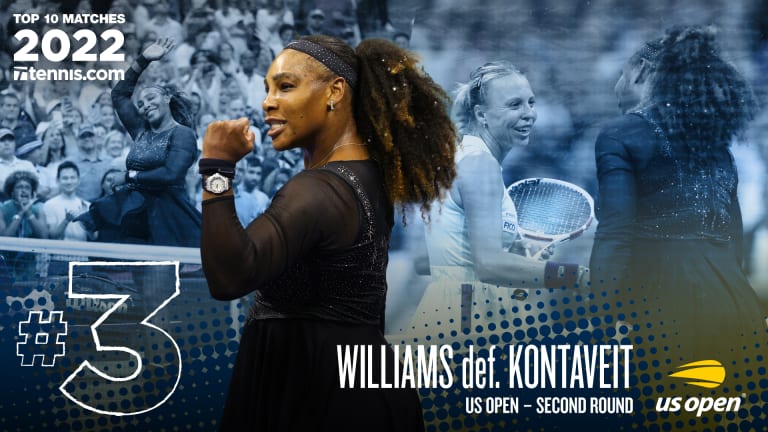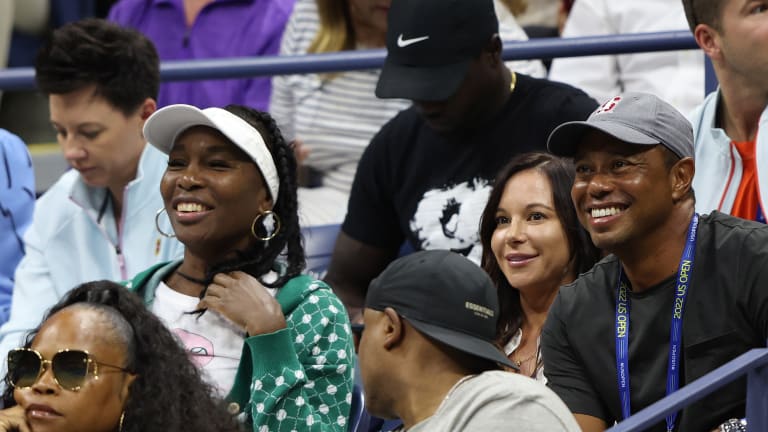The Top 10 Matches of 2022
No. 3 of '22: Serena Williams' unforgettable three-night run peaks with a win over the US Open's No. 2 seed
By Dec 07, 2022The Top 10 Matches of 2022
No. 1 of '22: Carlos Alcaraz conquers Novak Djokovic in a classic, kicking off a generations-spanning rivalry
By Dec 09, 2022The Top 10 Matches of 2022
No. 2 of '22: Rafael Nadal never gives up in career-defining Australian Open final reversal against Medvedev
By Dec 08, 2022The Top 10 Matches of 2022
No. 4 of '22: Roger Federer didn't win his farewell match, but a sendoff for the ages eclipsed the final scoreboard
By Dec 06, 2022The Top 10 Matches of 2022
No. 5 of '22: Carlos Alcaraz and Jannik Sinner beam the future of tennis backwards in time (and play until 2:50 a.m.)
By Dec 05, 2022The Top 10 Matches of 2022
No. 6 of '22: Iga Swiatek was the best this season—and she brought out the best in Barbora Krejcikova
By Dec 02, 2022The Top 10 Matches of 2022
No. 7 of '22: Rafael Nadal, Felix Auger-Aliassime, and tennis of the highest and most engrossing order
By Dec 01, 2022The Top 10 Matches of 2022
No. 8 of '22: Nick Kyrgios and Frances Tiafoe put it all together this season, and in this match
By Nov 30, 2022The Top 10 Matches of 2022
No. 9 of '22: Petra Kvitova edges Garbine Muguruza in US Open third-rounder that felt like a final
By Nov 29, 2022The Top 10 Matches of 2022
No. 10 of '22: 19-year-old Holger Rune arrives with win over Novak Djokovic in Paris Masters final
By Nov 28, 2022No. 3 of '22: Serena Williams' unforgettable three-night run peaks with a win over the US Open's No. 2 seed
They all came to see to see her one more time, and the all-time great didn't leave them, or herself, disappointed.
Published Dec 07, 2022
Advertising
Advertising
Advertising

By beating the No. 2 player in the world, Serena defined herself as a winner to the end.
Advertising

Tiger was seated near big sister Venus in Serena's players box on Arthur Ashe Stadium as the 23-time Grand Slam champion took on world No. 2 Anett Kontaveit.
© Getty Images